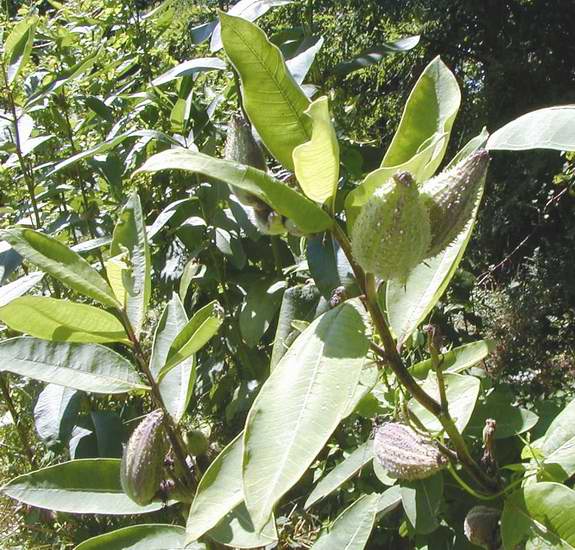|
Common
Name: Milkweed (exudes
sticky, milky white latex when cut) Scientific
Name: Asclepias
syrica (named for Asclepius, who, in Greek mythology
was raised by the Centaur Chiron, who taught him medicine, including
restoring the dead to life, for which Zeus struck him dead at Hades' behest) A 3 to 5 foot tall thick stemmed roadside plant with large elliptical opposite leaves and pinkish-purple flowers in clusters. The large rocket shaped pods develop in autumn. Potpourri: Milkweed produces a chemical called cardiac glycoside that results in mild to severe poisoning in herbivores and most insects. The Monarch butterfly however has adapted to the toxin and lays its eggs on milkweed plants. The Monarch caterpillar passes the toxicity on to the adult. They both are brightly colored to indicate this. The pods contain a fluffy material that is about 5 times as buoyant as cork. During World War II when the Malaysian kapok that had been used to fill life vests was no longer available, children in the United States gathered milkweed pods to serve as an alternative. 23 million pounds of pods were used to fill 1.2 million "Mae West" life vests.
Milkweed sap has been used as a topical treatment for skin disorders including warts, ringworm, moles, and poison ivy and as a tea prepared from the root as a diuretic for kidney stones, a laxative and an expectorant. The Native Americans reportedly used milkweed as a contraceptive. Milkweed shoots and pods are edible if thoroughly cooked. |
